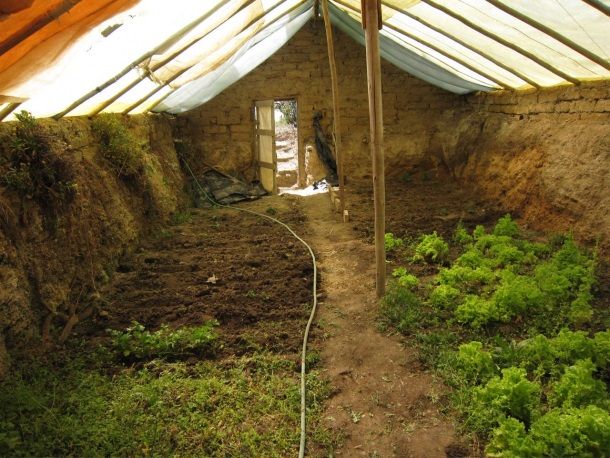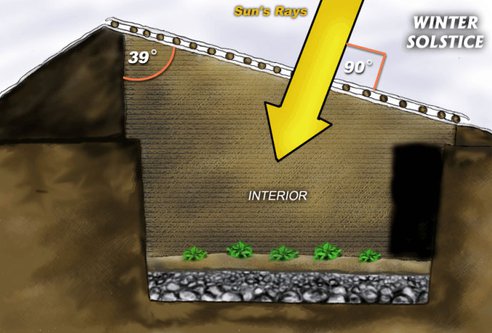How to Build a $300 Underground Greenhouse for Year-Round Gardening

Growers in colder climates need new technologies to extend the growing season so that local food can be supplied to people in any region of the globe. Passive Solar underground greenhouses are one solution.
Greenhouses are typically expensive to construct, and heat throughout the winter. A more affordable and efficient alternative to glass greenhouses is the walipini (an Aymara Indian word for a “place of warmth”), also known as an underground greenhouse. Developed over 20 years ago for the cold mountainous regions of South America, this technology allows growers to care for a productive garden year-round, even in the coldest of climates.
Here’s a video tour of a walipini that was made for $20,000
TABLE OF CONTENTS
How it works and how to build a Walipini:

The sun’s light and heat comes through the plastic roof and is trapped inside, heating up the walls and keeping it warm (above about 50 deg) all night. The other advantage is the protection from wind as there are no external walls.
From the non-profit Benson Institute comes this free, enlightening manual on how a walipini works, and how to build it:
The Walipini utilizes nature’s resources to provide a warm, stable, well-lit environment for year-round vegetable production. Locating the growing area 6’- 8’ underground and capturing and storing daytime solar radiation are the most important principles in building a successful Walipini.
The Walipini, in simplest terms, is a rectangular hole in the ground 6 ‛ to 8’ deep covered by plastic sheeting. The longest area of the rectangle faces the winter sun — to the north in the Southern Hemisphere and to the south in the Northern Hemisphere. A thick wall of rammed earth at the back of the building and a much lower wall at the front provide the needed angle for the plastic sheet roof. This roof seals the hole, provides an insulating airspace between the two layers of plastic (a sheet on the top and another on the bottom of the roof/poles) and allows the sun’s rays to penetrate creating a warm, stable environment for plant growth.
Far less energy is needed to heat up the walipini’s interior than an aboveground greenhouse, because this earth-sheltered greenhouse taps into the thermal mass of the earth. The manual goes over in detail, the precautions to take in waterproofing, drainage and ventilating the walipini, while aligning it properly to the sun.
Thanks to the use of free labour provided by friends and neighbours, and the use of cheaper materials like plastic ultraviolet (UV) protective sheeting and PVC piping, the Benson Institute’s 20-foot by 74-foot walipini field model out in La Paz costs only $250 to $300 to make.
Cheap and effective, the underground greenhouse is an unmatched way for growers to grow food year-round in colder climates.
